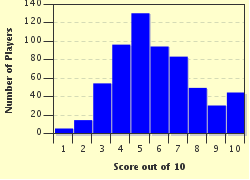Quiz Answer Key and Fun Facts
1. Weighing in at up to 700 kilograms (1,500 lbs) for a male, this ruminant has a different name in American and British usage. For this question, I don't want the name, however, but rather the antlers - which of these is correct?
2. Eight animals of this species are said to pull Santa Claus's sleigh. In nature, they are not quite as fast as in this folklore and can't fly, but they are still capable of a quite significant speed - what is their approximate top sprinting speed?
3. The animal shown here is the North American variant of a rodent that also has species in South America, the Mediterranean, South Asia and Africa. Which is the main aspect in which the North American variant differs from its Old World (European / African) cousin?
4. I suppose everyone knows this little fellow whose habitat is not restricted to Alaska but stretches across the entire North American continent, including the cities. Which of the following is its closest relative?
5. You'll probably immediately recognize the markings on the right-hand animal in this picture - the left one is a rare cream-colored individual of the same species. If you don't know yet, their, erm, scent will lead you onto the right track. What kind of compound is responsible for the unpleasant aroma these beautiful animals can spray?
6. This image shows three canines at play - you certainly know them as the ancestor and wild cousin of domesticated dogs. They travel and hunt in packs, but which is the most common configuration of such a pack?
7. The animal in this picture is undoubtedly a feline - and probably not a native Alaskan but a member of the Eurasian subspecies. Which cat is this agile predator most closely related to?
8. This uniquely Alaskan bear is the largest brown bear and rivals the polar bear for the title of largest bear overall. It is named for the archipelago on which these bears live - what's its name?
9. There's no mistaking this animal - the shape and color are unique. An adult male will, on average, weigh half a metric ton, but its cubs are tiny at less than a kilogram. How long does it take for the average cub to grow up to the point where it is weaned from its mother?
10. Here's a sea lion - one of five species. Only one of those species can however truly be considered a native of Alaska (along with other locations), which one?
Source: Author
WesleyCrusher
This quiz was reviewed by FunTrivia editor
gtho4 before going online.
Any errors found in FunTrivia content are routinely corrected through our feedback system.

